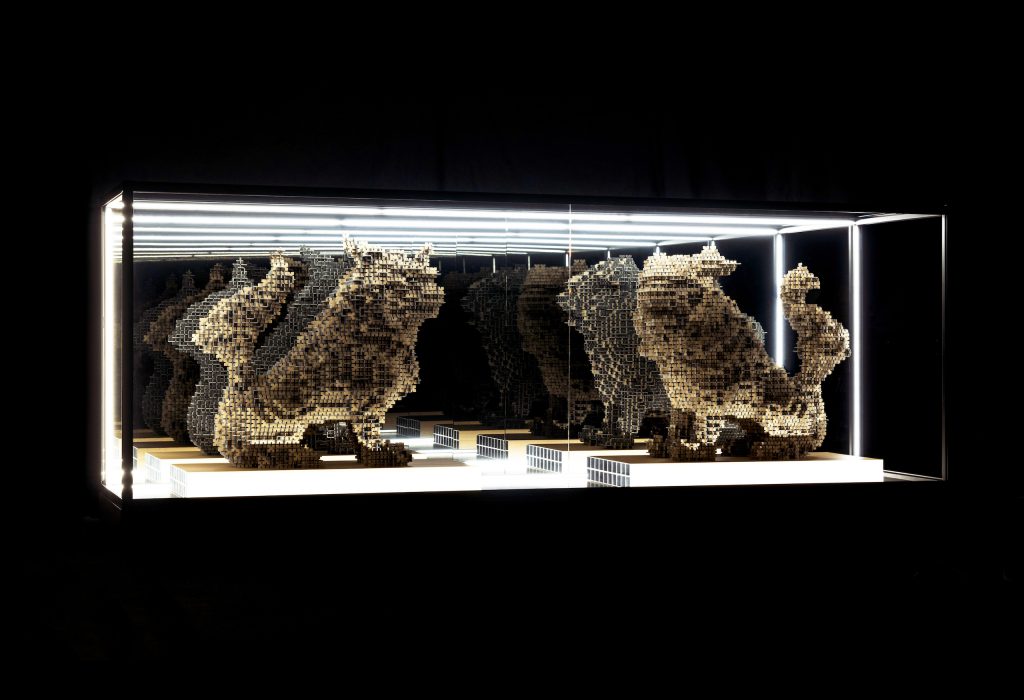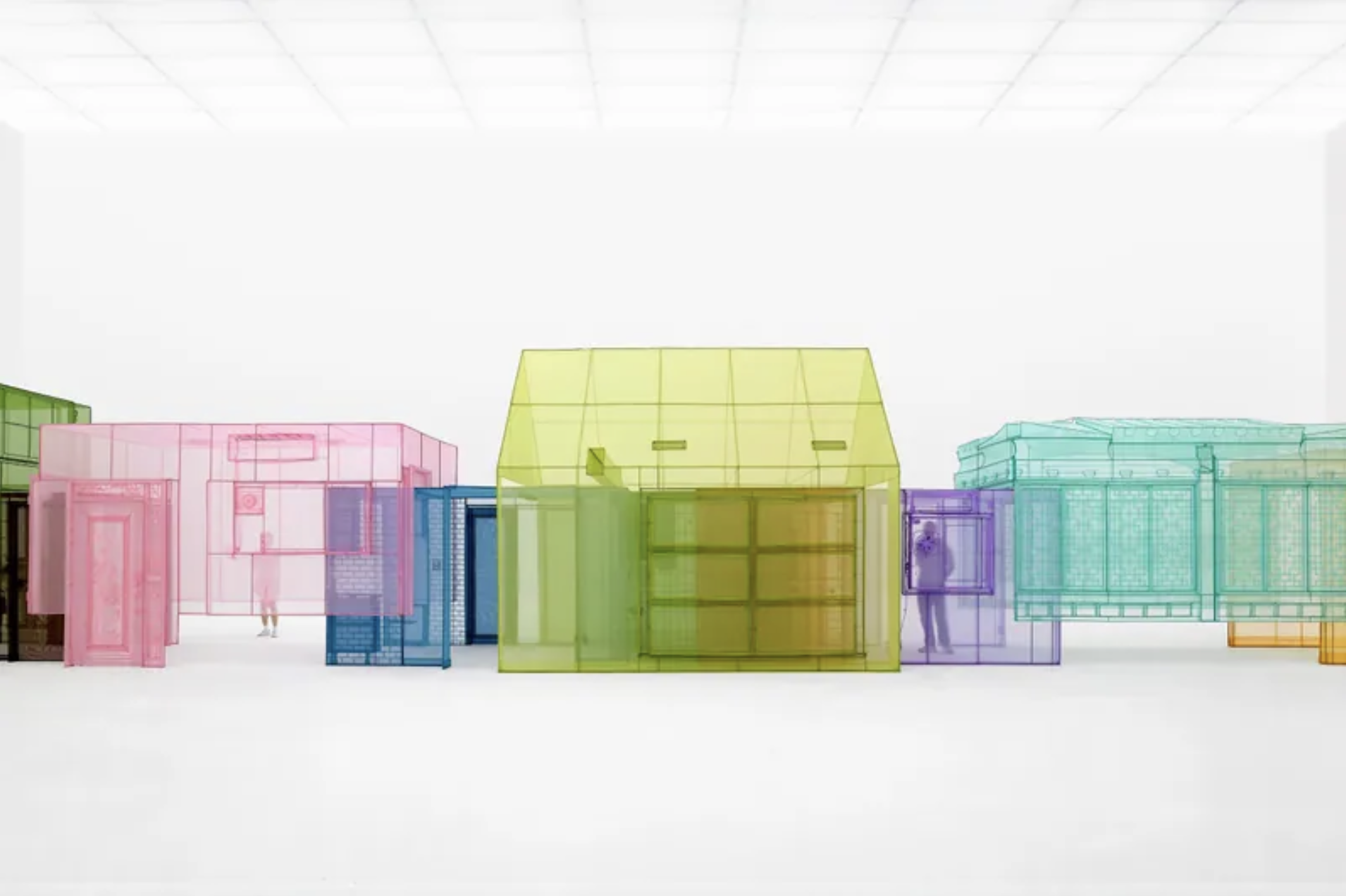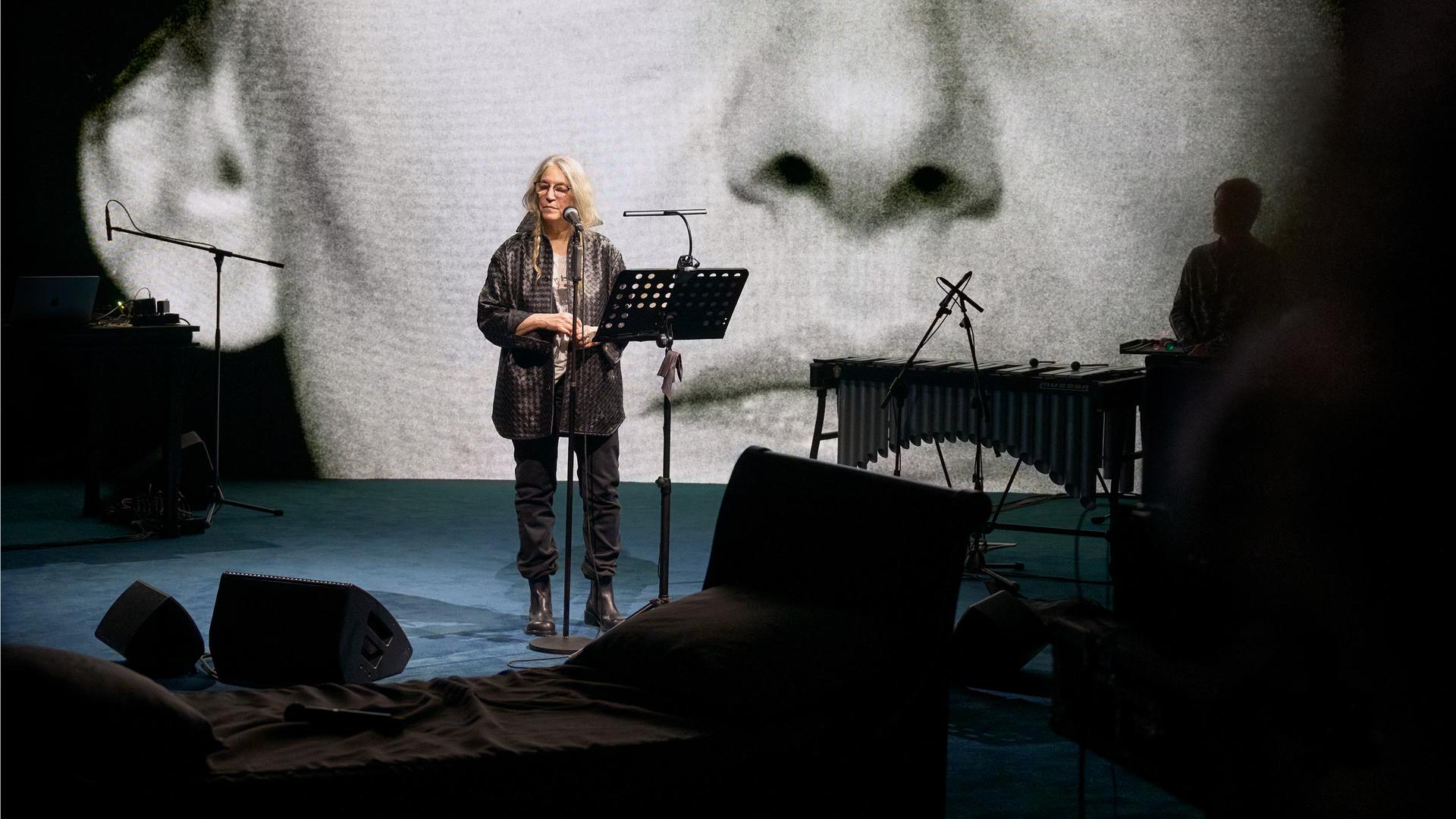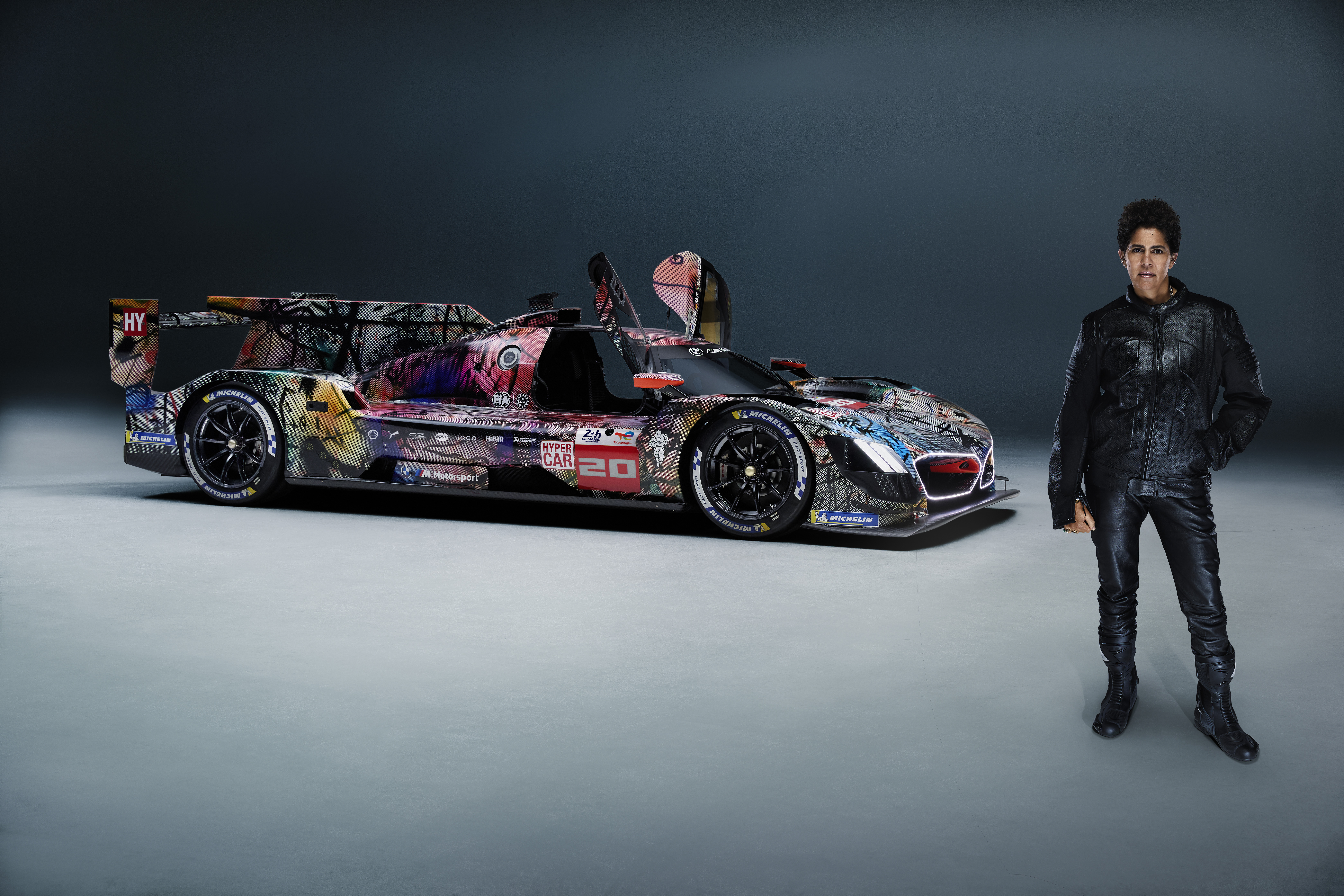Secca, a Japanese creative group, has created an intricate sculpture from 15.000 pieces of artificial wood.
The sculpture resembles a three-dimensional puzzle. Combining traditional Japanese techniques and concepts with cutting-edge technology, A↔︎UN explores the impact of digital technology on our relationship with nature.
The sculpture depicts a pair of a-un komainu (guardian lion-dogs), made by connecting each individual pixel-like piece to the next. The pair is enclosed in a series of frames that resemble a digital device, representing a parallel world that countlessly exists in a virtual space projected by the front and back mirrors.
“Humans have admired and envied what nature is capable of creating, and in the process of desperately trying to mimic and artificially replicate those creations, we have made advances in technology,” explains Secca. “What may have started as figurative painting, the act of replicating a scene observed by a viewer, has now become capable of recreating the structural colors of morpho butterflies, organs, genes, and even personality traits of an individual. wood too can be artificially produced just like the others. while it was originally done two dimensionally by printing simple wooden patterns on flat surfaces, the cutting edge 3D-printing technology has evolved to the point where it is capable of reproducing the finest bumps of a vascular bundle, making it difficult to distinguish man-made from real wood. we like to have trees around, but never being satisfied with what we have, we create artificial ones that are more convenient to us. what we are enjoying in the end is a space surrounded by fake trees that look real.”
A↔︎UN is part of the exhibition Kiinseido: Hirakushi Denchu and works connecting tradition with the future at the Meiji Jingu Forest Festival of Art in Tokyo. Visit Secca’s website to learn more.




